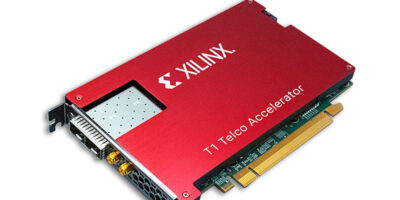Xilinx says accelerator card increases 5G O-RAN virtual baseband units
Increasing network performance while reducing CPU core count, cost and power, the T1 Telco Accelerator Card for open radio access network (O-RAN) distributed units has been released by Xilinx.
The T1 Telco Accelerator Card is designed for O-RAN distributed units and virtual baseband units in 5G networks. Xilinx has used its field-proven Xilinx silicon and IP already in 5G networks for the multi-function PCIe form factor card which is claimed to be the only available which performs both O-RAN front haul protocols and layer 1 offload. Advanced offload capabilities mean that the T1 card provides a dramatic reduction in the number of CPU cores required in a system, Xilinx says. The T1 card also enables the O-DU to deliver greater 5G performance and services while reducing overall system power consumption and cost compared to competitive offerings, adds the company.
Demand for O-DU and vBBU solutions is rapidly increasing because they provide an open and standard platform for a wide range of 5G virtualised services, reports Xilinx. The T1 card is a small form factor, single-slot card that can be plugged into standard x86 or non-x86 servers to achieve the real-time protocol processing performance required for 5G virtualised O-DU platforms. It also offloads line-rate and compute-intensive functions such as channel encoding/decoding using hardened LDPC and Turbo codecs, rate matching/de-matching and HARQ buffer management, which frees the processor cores for running other services.
The T1 card simplifies 5G deployments by offering a turnkey solution through ecosystem partners that includes both O-RAN front haul and 5G NR layer 1 reference designs, as well as pre-validated software to enable operators, system integrators, and OEMs to get to market quickly, Xilinx claims.
Offloading the critical channel coding functions from the CPU to the T1 card delivers up to 45x encoding and 23x decoding throughput improvement relative to the same server without acceleration. The card also requires fewer CPU cores, driving down system cost and overall power consumption. For O-RAN front haul termination, it can process multiple sectors of 5G NR 4TRX at 100 MHz OBW with its 50Gbits per second of optical ports. The front haul and L1 bandwidths are matched so that cards can be added to the server for scalability.
The T1 card is available and sampling now to customers worldwide. Volume production is expected by the beginning of 2021.

